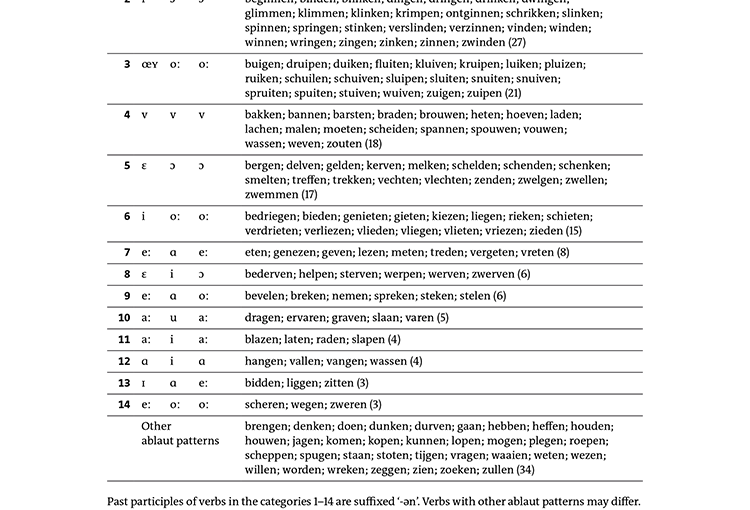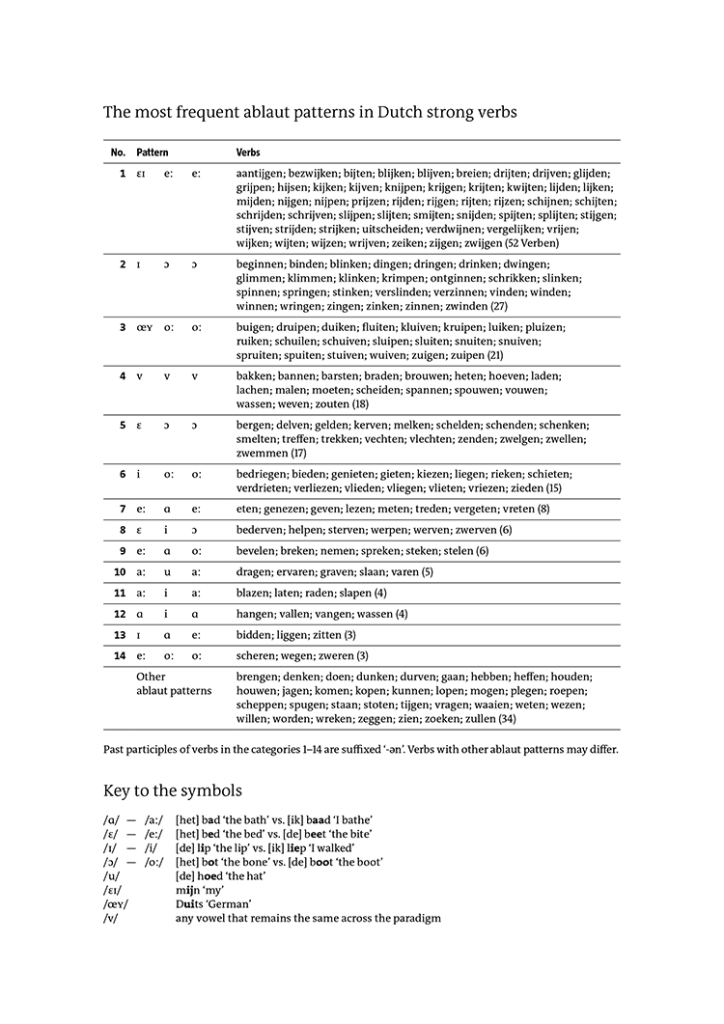If you ever wondered how to inflect non-existing Dutch verbs, you should have a look at a recent article by Remco Knooihuizen and Oscar Strik (Rijksuniversiteit Groningen). If you ever wondered how to inflect irregular Dutch verbs that do exist, the overview below might help you. I compiled it a couple of years ago—based on various sources including the Algemene Nederlandse Spraakkunst, a Dutch grammar, and the Dikke Van Dale, a Dutch dictionary—when I started learning Dutch. Like everything in the world, it is probably not fully accurate and complete, but I found it handy back then to have the most important irregular inflection patterns on a single sheet. If you know all these by heart, you will be able to correctly inflect more than 80% of the Dutch strong verbs (although the percentage would probably be a bit lower when we take frequency of occurrence into account).
The table gives the vowel of the infinitive, of the singular past tense and of the past participle. It has to be noted that consonant changes, which occur in a minority of strong verbs, are not included in this overview: slaan, for instance, is not slaan – *sloe – *geslaen, but slaan – sloeg – geslagen (if you want to learn a language that is more regular in this respect, try German, which has introduced the ‘g’ from the past participle in the infinitive as well). Also, the ‘-en’ suffix that is used in the past participle of all verbs in the categories 1–14 does not necessarily occur in all verbs with other inflection patterns: denken, for example, has [ɑ] in both the past tense and the past participle, and the [ŋk] has to be replaced by a uvular fricative. It is, however, not inflected denken – dacht – *gedach(t)en, but denken – dacht – gedacht. You’ll have to look up the specificities of these rare inflection patterns for yourself. You should also know that a number of verbs have more than one inflection pattern: The strong form can be archaic (wassen – wies instead of wassen – waste), regional (breien – bree is only used in Belgium instead of breien – breide), linked to a specific meaning (prijzen – prees – geprezen is used when the word means ‘to praise’, whereas prijzen – prijsde – geprijsd is used for ‘to price’) or linked to a specific morphological form (schrikken – schrok – geschrokken is strong, whereas some prefixed forms are not, for instance afschrikken – schrikte af – afgeschrikt). All these details are not in my overview, but my guess would be that you won’t need the overview any more when you get everything right except for these details.
Click the image to download the overview as a PDF (which is licenced under CC BY-NC-SA). Comments are obviously welcome if you spot any errors or omissions.

